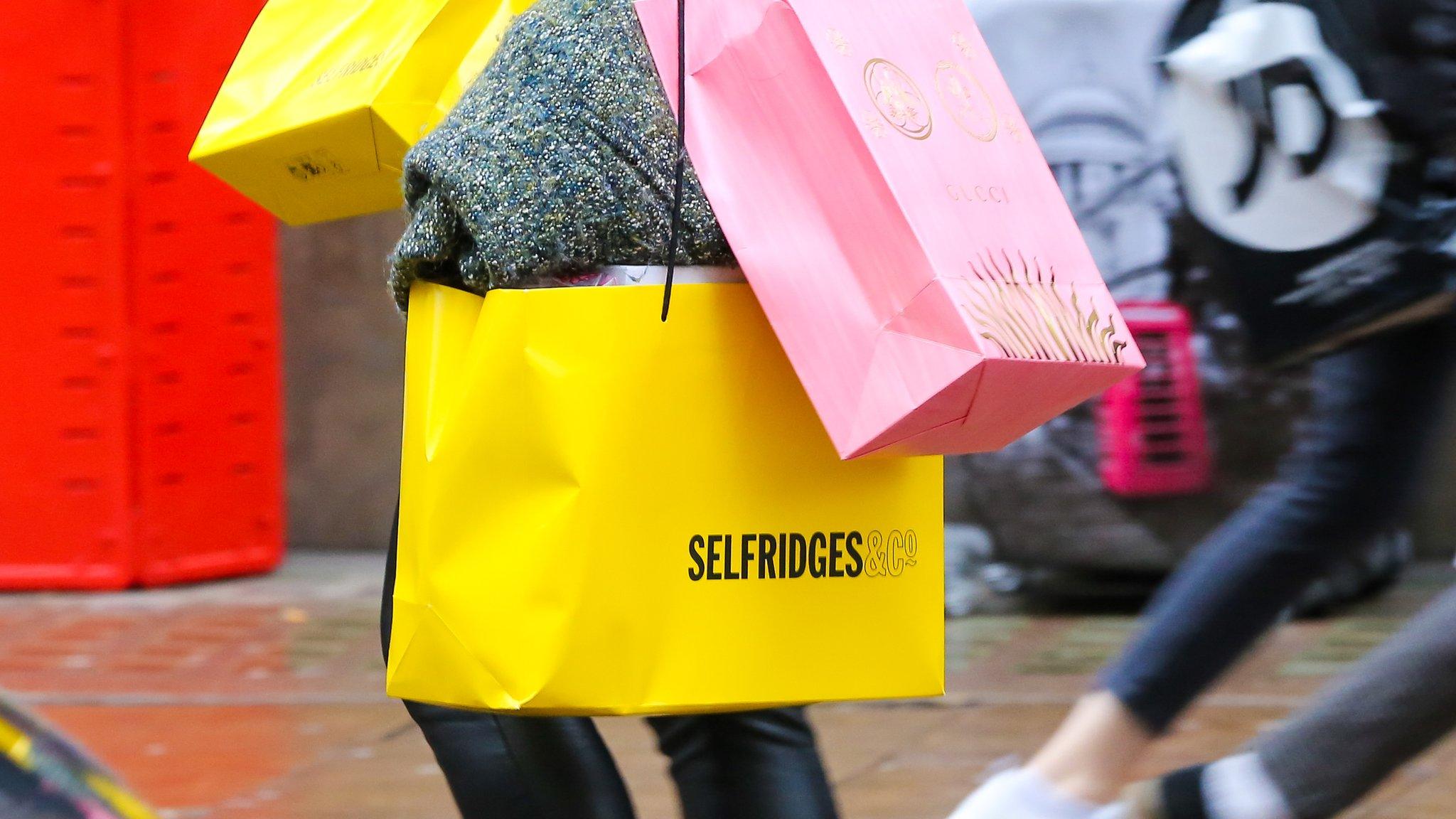Christmas: How shops fared in four charts
- Published
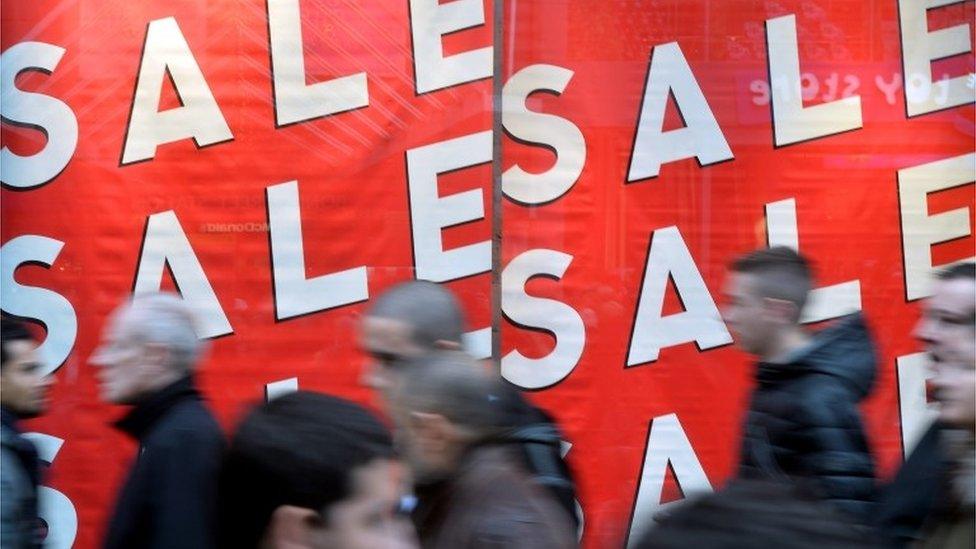
Most shops have reported their sales figures for the festive period. We take a look in four charts at how they fared.
Ahead of Christmas 2018, the fact that many shops were already offering large discounts suggested they were struggling to sell their stock.
Retail industry body the British Retail Consortium says it was the worst Christmas in a decade for businesses overall with total sales flat year-on-year in December.
But not all shops fared badly.
We take a look at how the retail sector overall did over the festive period in four charts.
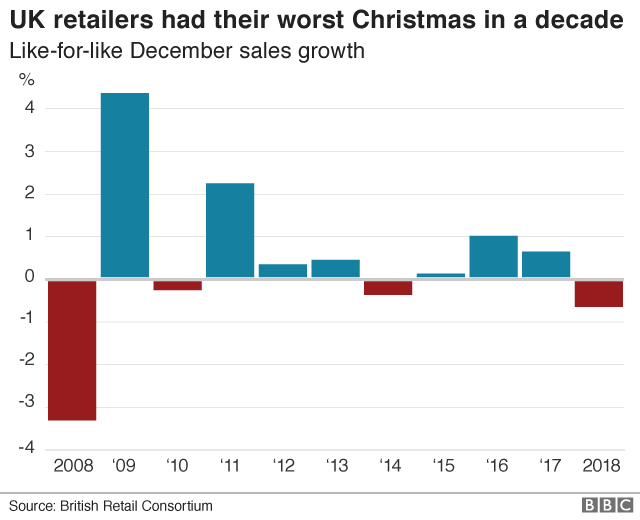
The British Retail Consortium sales figures for December are striking.
The last time this survey recorded zero growth was in the midst of the global financial crisis and as the UK was entering a recession.
But the figures aren't perfect. For instance, they don't capture Amazon's sales. But they do cover up to three quarters of the retail sector and are an authoritative snapshot of retail spending.
December's poor numbers highlight what's already been apparent all year - that trading on the High Street is very challenging for retailers.
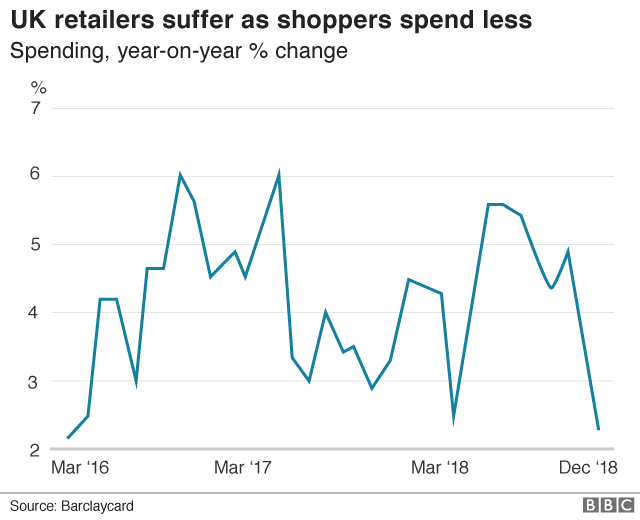
These figures suggest that after the Brexit referendum, as inflation outpaced wage rises, people started dipping into their savings, increased borrowings, and kept on spending.
We also splashed out over the summer thanks to the hot weather and the World Cup.
But we were more cautious in the second half of the year.
Underlying economic conditions for consumers have improved with real income growth, meaning greater household spending power on average. Despite this caution seems to have been the watchword over Christmas, too.
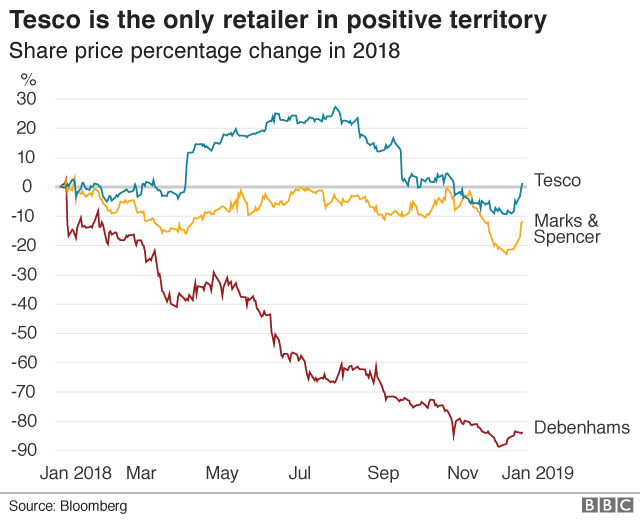
Tesco has had a tough year but its Christmas like-for-like sales, which strip out sales from new stores, were up 2.2%. That put it ahead of the competition and marked its own personal best since Christmas 2009. The sense that positive momentum was building for the supermarket has pleased its investors and boosted its shares.
High Street stalwarts Debenhams and Marks & Spencer, however, failed to overcome their well publicised problems.
Marks & Spencer's share price has been in the doldrums all year and much of its problems are self-inflicted. It's in the midst of yet another turnaround. Its sales fell over the Christmas holiday period, with chief executive Steve Rowe blaming a combination of reducing consumer confidence, mild weather, Black Friday, and widespread discounting by competitors for "a very challenging trading period".
Nonetheless, although Marks & Spencer's festive numbers were poor, they weren't as bad as some had feared, helping its shares to pick up in January.
In contrast, Debenhams share price has collapsed by 90% in value over the last year as the chain announced one profit warning after another. It's now in a fight for survival and Christmas hasn't helped.
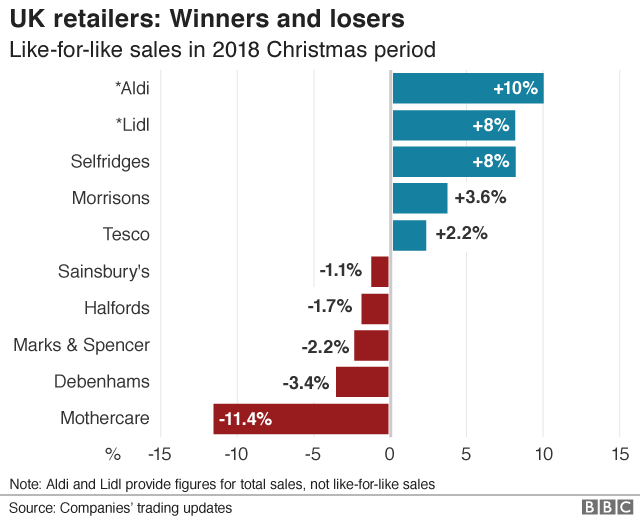
There are always winners and losers when it comes to grabbing a share of our Christmas cash.
Overall, the supermarkets were solid, but the discounters stole a march, seeing the strongest growth.
The going was far harder in non-food where spending is more discretionary. The gap appears to be widening between retailers who have a strong online offer as well as the right mix of shops, product and service, and those who are struggling to adapt to our changing shopping habits.
- Published10 January 2019

- Published11 January 2019
